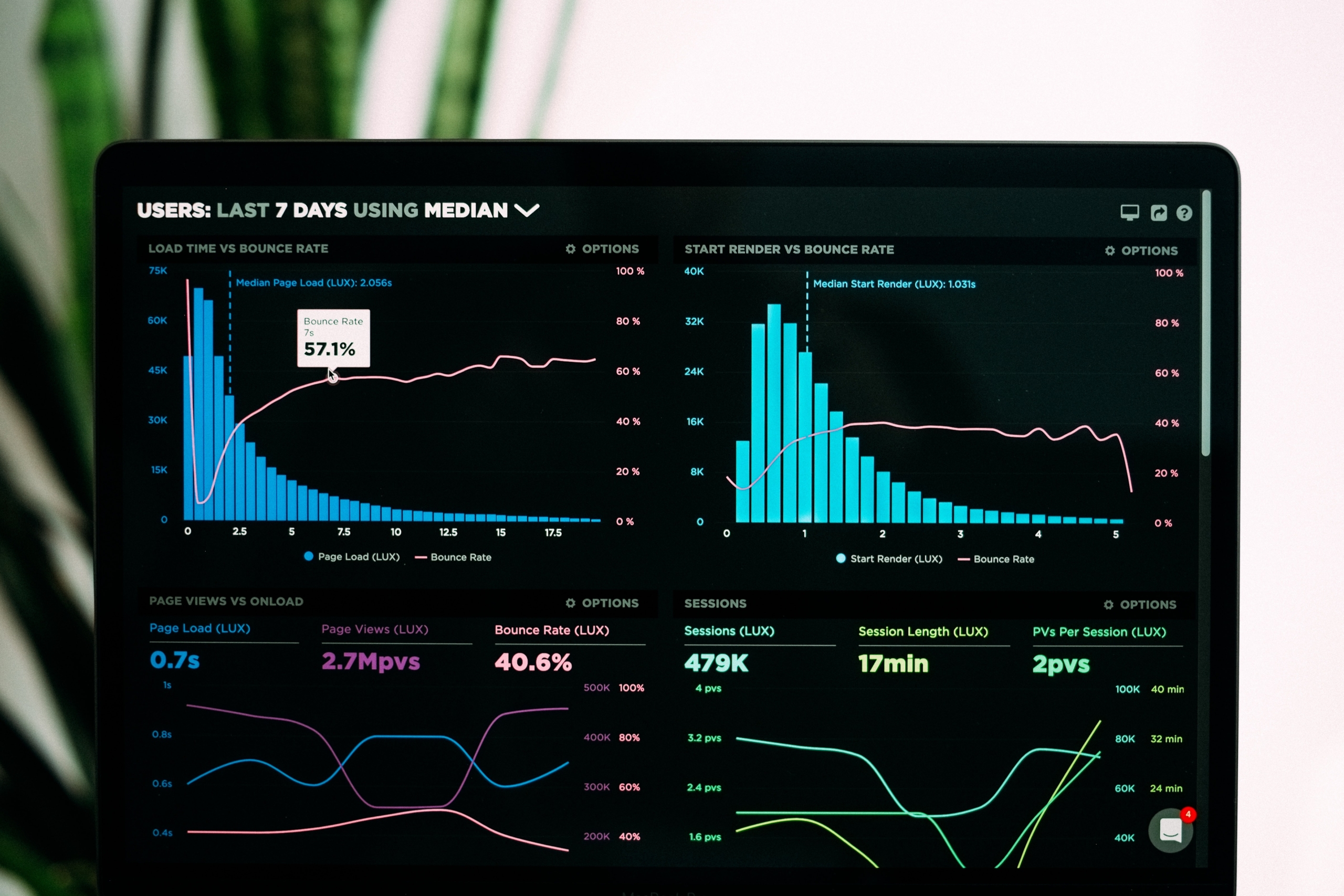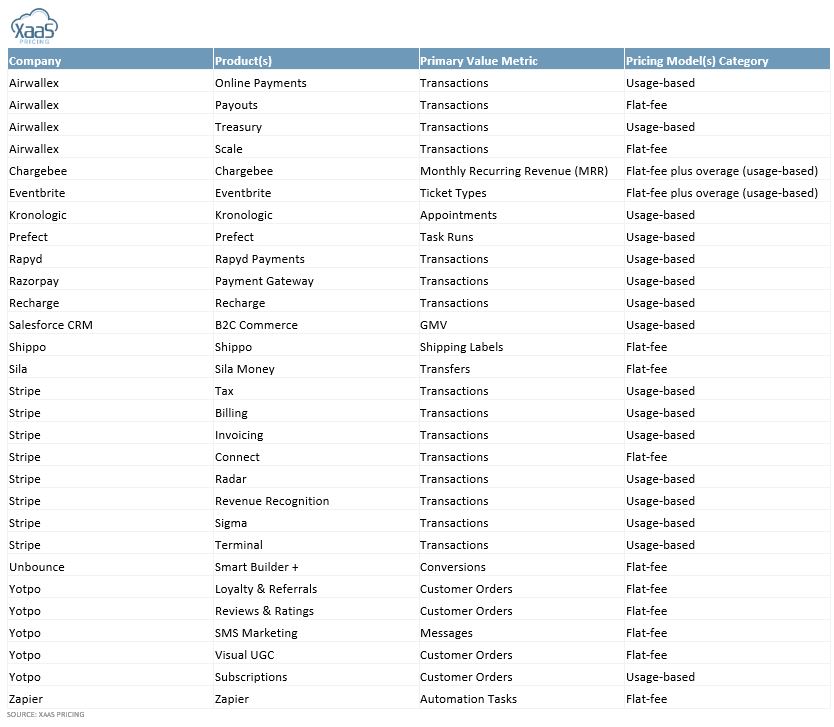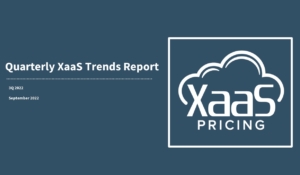The 3 types of SaaS value metrics, and the prevalence of outcome-based packaging and pricing models in SaaS
September 2022
Author: Bryan Belanger
September 2022
Author: Bryan Belanger

In our previous post, we offered our perspective on the critical differences between value metrics, usage/fencing metrics, and pricing metrics for SaaS products. If you haven’t read that post, I recommend you go back and do so. This post will make a lot more sense if you do!
If you want the Cliffs Notes: Value metrics define how customers get value from your product on a per unit basis. There can be many value metrics, but in practice, you should probably top out around five or seven that are most critical. One of these value metrics is ideally used as the foundation for the pricing metric, which is how you price your product to customers. The others, or a subset of the others, are used to establish fences for the different plans of your product, assuming you use a good-better-best or other tiering strategy. Note: Not all value metrics have to be fences.
This raises additional questions: What types of value metrics are there, and how do we choose which ones make the most sense for our product?
We’ve seen various posts on the “best” value metrics and the “right types of value metrics.” None of those are quite right. You need to determine the value drivers for your product and design value metrics that align to those value drivers. Again, you then use those value metrics to determine pricing metrics and pricing fences. We do believe, however, that value metrics can be categorized broadly into three big buckets:
Outcome-based monetization is not a new topic. I started as a research analyst in 2010 covering the IT professional services ecosystem, and outcome-based pricing was a frequent area of client inquiry and project investigation. The same questions we got back then are the same ones we get today from technology product and service providers. Any discussion of XaaS evolution, including SaaS, incorporates theoretical frameworks about the evolution to outcome-based pricing models. This piece from Deloitte is probably the best example.
The general wisdom from practitioners is that outcome-based pricing is great in theory but really hard to actually implement. Models get too complex, one side or the other feels like it is putting too much skin in the game, budgets become unpredictable, and traditional monetization structures prevail. This is definitely true in more mature industries like IT services and telecom. But is it also true in SaaS?
SaaS, in theory, is one of the easier categories within XaaS to implement an outcome-based packaging and/or pricing strategy. The margin profiles of the industry support taking an outcomes-based approach and there are documented methods and case studies to use in designing a value-based pricing strategy that aligns to customer outcomes. Defining value drivers and translating those into value metrics, and then ultimately into pricing that aligns with a defined outcome, are definitely hard but, in some ways, straightforward when it comes to SaaS products. A SaaS product is designed to complete a job with code; professional services are similar, but there can be political and organizational factors associated with services that make outcomes much harder to measure.
We dug into this question through the lens of our set of 300-plus SaaS companies that XaaS Pricing tracks. The goal was to identify how value metrics associated with customer outcomes are being translated into packaging and/or pricing models.
We identified four different types of monetization models that SaaS vendors are using to align pricing and packaging to outcomes:

While the above is a reliable framework for defining the types of outcome-based models, in practice, the use of all these models is limited. In our current XaaS Pricing dataset, we have identified a total of 29 products (of the 300-plus companies we track in SaaS) that use a true outcome-based SaaS pricing strategy.
The use of these models is heavily weighted toward the payments category, which includes Airwallex, Rapyd, Recharge, Sila, Chargebee and Stripe in our dataset. These companies typically employ usage-based models where they capture a percentage of transaction volume. Other categories that are embracing aspects of outcome-based pricing include automation platforms, such as Prefect and Zapier, as well as e-commerce website and shipping platforms, such as Shippo and Yotpo.
The full set of outcome-based models from our data set is outlined in the chart below:

This data reflects the current state of true outcome-based pricing strategies in SaaS; these models are weighted toward certain industry categories and specific types of models. While outcome-based approaches may become more popular over time, particularly as the industry marches toward delivering “do it for you” value propositions with products and services, these models will likely remain on the fringes as compared to traditional packaging and pricing strategies.
There are a number of different and often interrelated reasons why outcomes-focused models are rarely used by SaaS companies. These include, but aren’t necessarily limited to:
Should you take one thing away from this post, it’s that you need to take a true value-based approach to pricing strategy. This doesn’t mean jumping right into customer interviews or willingness-to-pay survey research. This means quantifying, modeling and managing economic value and perceived value of your product and tiers of that product for each of your customer segments, and doing so with a systemized, regular approach. This is a tall ask for time- and resource-strapped SaaS companies, but it’s the foundation of everything you’ll do when it comes to making decisions about pricing and packaging.
We won’t spend much time here on the ins and outs of how to build those models and merge them into your pricing strategy process; others have written in detail about that, and we touch on those topics in this blog as we go. But in the context of this post about outcomes-based models — value is equivalent to outcomes. So if you aren’t taking these steps to deploy a value-based pricing strategy, you’ll never even scratch the surface of defining, quantifying, measuring and potentially even pricing on outcomes.
Let’s assume you’re past that, and that you have viable models for defining and measuring the outcomes (value) your product delivers. You’ve translated those value drivers into value metrics. Presumably one, if not all, of those metrics is based on customer outcomes achieved by your product. You’re now wondering whether you should define pricing and/or packaging directly based on those value metrics or establish an input- or output-based metric that tracks each of those value metrics.
What should you do?
In short, conduct as much customer and peer research as you can with the budget, time and other resources you have. These insights will light the way in helping you assess how to connect your established value model and value drivers to a pricing and packaging strategy.
Looking for hacks?
Like most things with SaaS pricing, there aren’t any. There’s no substitute for doing the work, iterating and adapting. But if you’re looking for rules of thumb, competitor and category data can provide some clues. Our data suggests that if you’re in a space like SaaS payments, there are well-established outcome-based pricing models that are used and accepted, so you might start there. For others in SaaS categories where seat-based or flat-fee tiered subscriptions are the norm, the emergent model seems to be to introduce an outcome-based metric into your packaging as your product’s primary value metric and establish a tiered packaging model with flat-fee prices. These can be areas to brainstorm to get you started, but please go and do the work! And, please let us know if you need help.
Want to talk SaaS pricing and value metrics, or have a question about how these concepts apply to your product? You can find me on Twitter at @bbelangerTBR or send your feedback directly to [email protected]. I read all replies. And be sure to subscribe to get our content sent to your inbox once it publishes!
 ©2022 XaaS Pricing. All rights reserved. Terms of Service | Website Maintained by Tidal Media Group
©2022 XaaS Pricing. All rights reserved. Terms of Service | Website Maintained by Tidal Media Group

 XaaS Pricing3 systemic trends that will shape the future of the ‘as a Service’ indu...
XaaS Pricing3 systemic trends that will shape the future of the ‘as a Service’ indu...